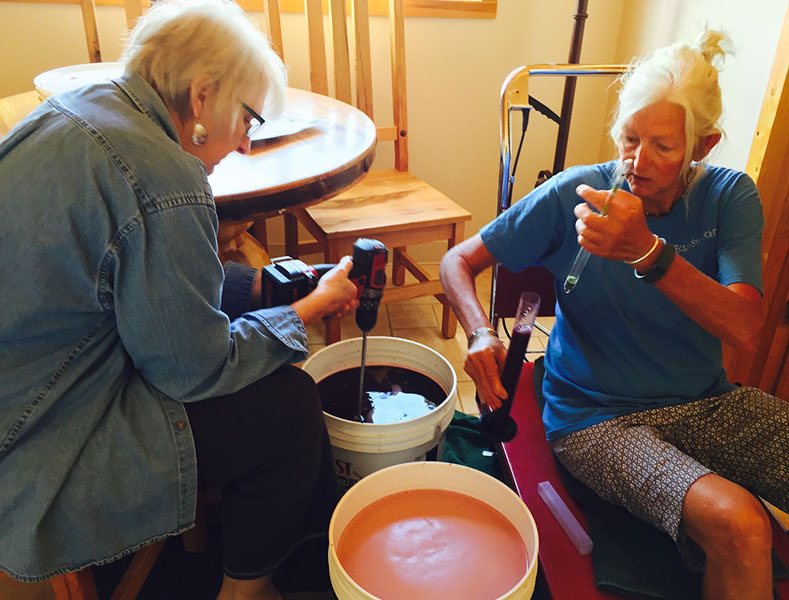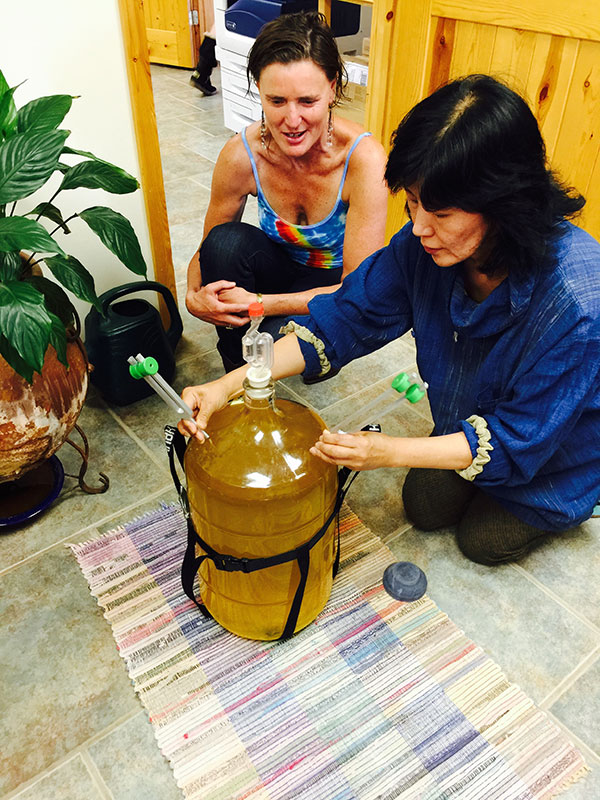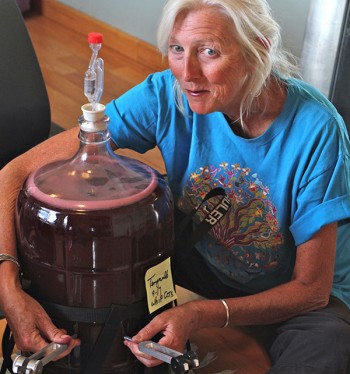Ellen F. Franklin, PhD
Many of you who have visited the Mothership have seen first hand that we are engaged year round in sustainable farming and small-scale wine production. These efforts are under the direction of Donna Carey, our chief alchemist, who in this blog post, shares some of her approaches for incorporating the use of tuning forks into the different stages of fermentation resulting in an exceptional tasting wine.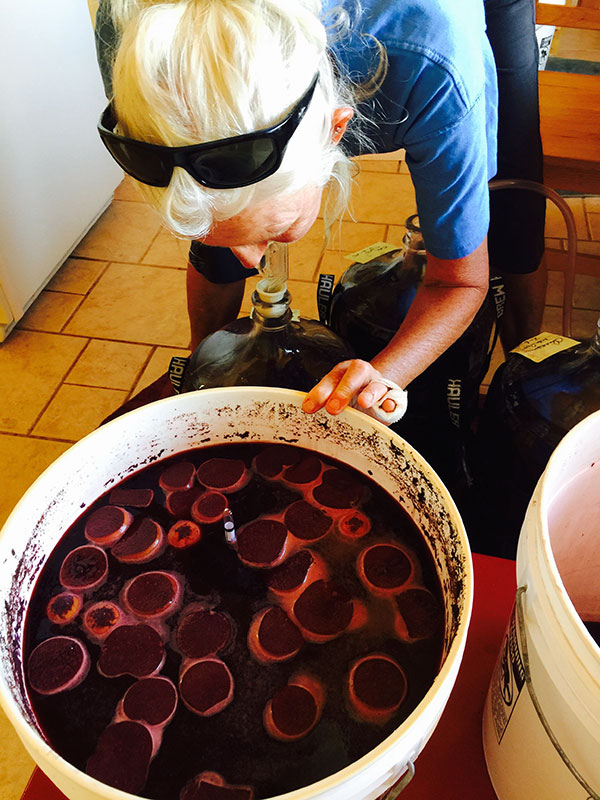
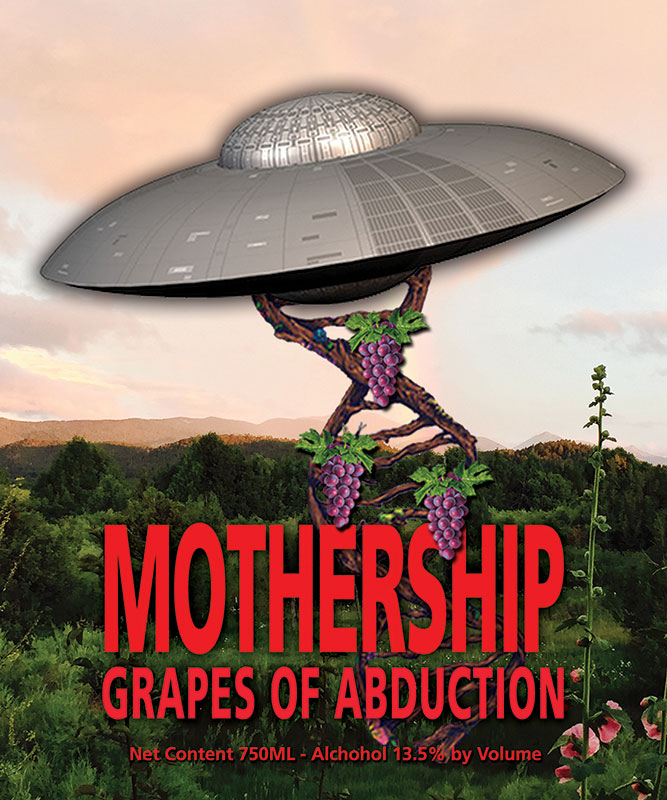 This fall we began the fermentation process with wine mash for Diablo Rojo, Montepulciano, Carmenere, and Bergamais. Since we brew in small batches and don’t use oak barrel aging we take some risks in adding flavor to the wine in the initial fermentation process. In addition to high quality yeast and oak chips, we have added dehydrated berries (especially raspberries since we had a huge crop of raspberries this year) pears, and apples all grown here in our valley. While these flavors add complexity to the fermentation process, the use of specific sound frequencies applied to the carboy or glass containers, allow for subtle adjustments to every batch throughout the fermentation process.
This fall we began the fermentation process with wine mash for Diablo Rojo, Montepulciano, Carmenere, and Bergamais. Since we brew in small batches and don’t use oak barrel aging we take some risks in adding flavor to the wine in the initial fermentation process. In addition to high quality yeast and oak chips, we have added dehydrated berries (especially raspberries since we had a huge crop of raspberries this year) pears, and apples all grown here in our valley. While these flavors add complexity to the fermentation process, the use of specific sound frequencies applied to the carboy or glass containers, allow for subtle adjustments to every batch throughout the fermentation process.
The Magic of Sound
But where does the real magic come in? During the initial fermentation process, additional ingredients get added for that special alchemy that allows the yeast to convert the sugars into alcohol. After the second fermentation process and the whipping out of CO2, we taste before we clarify to determine the nature of the wine. How do we best support a particular grape to reach its true potential? This is when the planetary tuning fork frequencies are applied.
If a wine tastes constricted we use Jupiter and the Zodiac Earth to expand and allow for a deep breath and becoming. If the Bergamais is leaning more toward a deeper burgundy flavor than the lighter bodied Gamay, we use Pluto and Nibiru for depth and to balance or correct any tampering that may have occurred with the original DNA rootstock or in the grafting or mixing process. Since, I am always encouraging wines to be ready before their time, Saturn and Mercury move things along, but retain the structure of the wine. If the wine is too tart the Venus octave can bring just the right amount of sweetness. Sedna is also excellent to conclude a treatment to the wine batch, as it super conducts fluids and helps the wine to evolve in the direction that best serves it (or you). Sedna has a special relationship to wine as she rules over animals on both sea and land including birds, and many animals depend on over ripe fruits for their own happy hours.
Last week, all stages of fermentation complete, we were able to bottle different types of Tempranillo, Sangiovese, and Pinot Noir as well as some new red blends a Chilean Sauvignon Blanc, and a Petite Syrah with added figs, coffee, and tobacco. Some of these will be ready for drinking this summer when classes resume here at the Mothership. Cheers!
